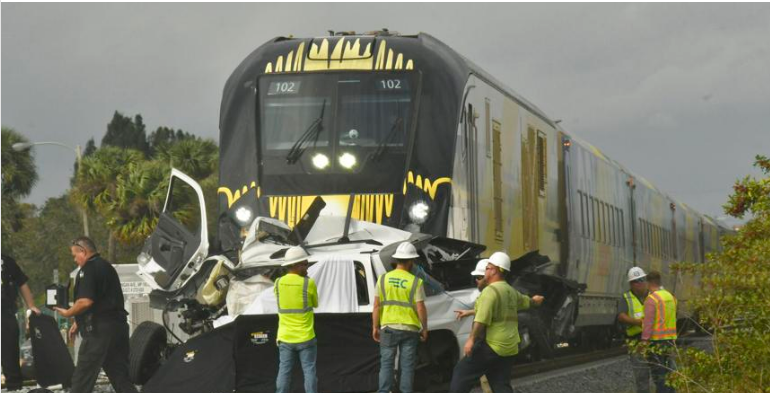The National Transportation Safety Board (NTSB) has launched an investigation into two recent fatal accidents involving Florida’s Brightline train. These incidents, resulting in three deaths at the same railroad crossing on the U.S. 1 corridor in Melbourne, have raised significant concerns about the safety of this high-speed rail service.
Details of the Accidents

Location and Timing: The accidents occurred along the high-speed route between Miami and Orlando, specifically in Melbourne on Florida’s Atlantic coast.
Fatalities: The first incident on Wednesday claimed the life of 62-year-old Charles Julian Phillips and injured three passengers. The second crash on Friday resulted in the deaths of Lisa Ann Batchelder, 52, and Michael Anthony Degasperi, 54.
Background: Since Brightline extended its route to connect South Florida and Orlando in September, there have been five fatalities. This raises the total deaths associated with Brightline since July 2017 to at least 108, highlighting a concerning trend in rail-related incidents.
Investigation and Responses
NTSB Involvement: The NTSB team plans to stay at the scene for several days to understand the safety issues at this crossing and explore ways to prevent future crashes.
Mayor’s Statement: Melbourne Mayor Paul Alfrey emphasized the importance of adhering to safety precautions at railroad crossings, especially with trains as fast as Brightline’s.
Safety Measures: Brightline has placed signs near crossings to warn drivers about the fast-moving trains, but the effectiveness of these measures is now under scrutiny.
The Context of Brightline’s Safety Record
Speed and Efficiency: Brightline’s trains, known for their neon yellow color, can reach speeds of up to 125 mph (201 kph), making the journey from Miami to Orlando considerably faster than driving.
Comparative Death Rate: Brightline’s death rate is reportedly the highest among over 800 U.S. railroads, with one death for every 38,000 miles traveled, a rate higher than California’s Caltrain commuter line.
Nature of Previous Incidents
No Fault to Brightline: Investigations into previous deaths related to Brightline have not found the railroad at fault. Most incidents involved suicides, pedestrians crossing tracks, or drivers bypassing crossing gates.
Public Safety Concern: The recent incidents have led to calls for enhanced public safety campaigns and possibly revisiting the safety measures in place at railroad crossings.
Read More:
- Fulton County DA Fani Willis Defends Prosecutor Nathan Wade Amid Affair Allegations in Georgia Election Case
- Governor Phil Murphy Signs Landmark Bills Supporting New Jersey’s Immigrant Communities
- Florida Among the Least Educated States in the US, According to New Survey
The NTSB’s investigation aims to provide a quick report in 30 days and a more detailed one in the next 12 to 24 months. This investigation will be crucial in determining the necessary steps to enhance safety measures and potentially save lives. The focus is not just on understanding these specific incidents but also on examining broader safety issues related to high-speed rail travel in densely populated areas. The outcome of this investigation could have significant implications for rail safety standards and public policy related to transportation infrastructure in the United States.

